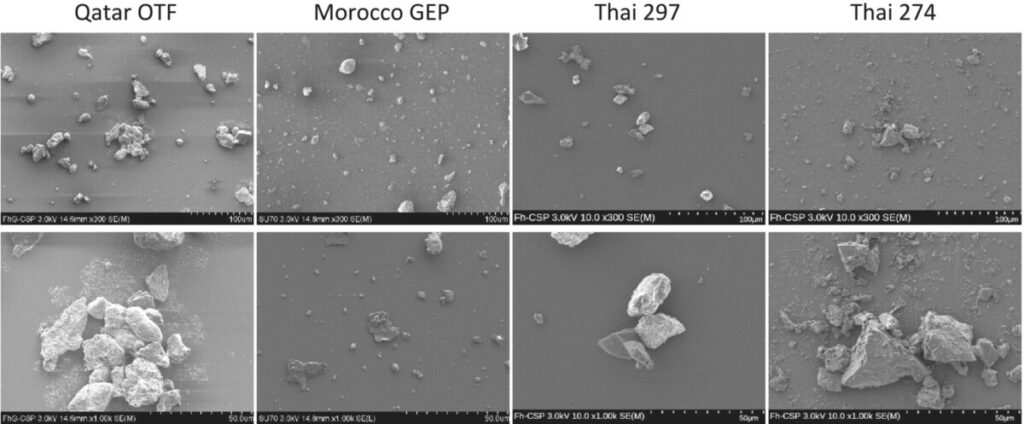Scientists in Germany have collected dust from Qatar, Morocco and Thailand to analyze the impact on the performance of non-coated solar glass and non-coated PV-mini modules. Their analysis has shown that dust coverage can vary from 4% to 60%.
A research team led by scientists from the German Anhalt University of Applied Sciences has conducted a study into the impact of different types of fabric on solar transmission and PV performance.
In particular, they analyzed and tested dust samples from urban areas of Qatar and Morocco, a rice field and a biofuel refinery system factory in Thailand (Thais 297 fabric), as well as Cassava and corn farms from the same country (Thais 274 fabric).
“The results of this work offer a wealth of useful information and findings about the optical, electric and microscopic characterization of pollution,” the scientists said. “Moreover, this extensive research offers valuable insights into the region -specific effects of the dust properties that occur. In summary, extensive correlation analyzes will demonstrate the differences between analysis methods.”
According to the analysis of the various dust samples, all quartz (SIO2) and calcite (CACO3) contain fractions in different quantities. The dust from Morocco and Thai 297 has a similar quartz capacity of 43% and 35% respectively; Qataric substance has 3%; And Thai 274 fabric has 85%. The calcite content of the Qatarese dust is the highest, with 59%. The Qatari and Moroccan dust samples have a water content of approximately 3%, Thai 274 fabric has 3.8%and Thai 297 fabric contains 6.7%.
The researchers used two sample groups-not-coat sun class and non-coated PV-mini modules. The non-cooate sunglasses consisted of 12 samples and the PV-mini modules consisted of four modules, where each test with one type of fabric was used for pollution.
The samples were cleaned with water between the tests and were then used under constant environmental conditions in 60% relative humidity (RH) and a temperature of 22 ° C during dust deposit. A slight dew cycle has exposed each sample to dew point conditions. The subsequent 40 ° C -heating treatment started a cementing process that tied the dust to the surface.
Both the mini modules and the non -coated sunglasses were tested under a dust coverage of 4% to 60%. Qatarisch fabric showed the lowest slope for transmission loss, with a surface cover of 0.51. Thai 297, on the other hand, shows the strongest transmission loss, with a surface cover of 0.60. The transmission loss of the dust from Morocco and Thai 274 shows an almost identical slope of 0.53.
“The short -circuit losses as a function of surface coverage have the expected linear trend,” the scientists said. “However, the measured slopes are lower than the calculated slope. Nevertheless, the ranking is equal to the observations. Thais 297 shows the strongest slope of ISC loss of 0.56. Qatar -dust shows the lowest slope, 0.40, Morocco -dust shows 0.43.”
The research team said that the findings can be used to refine mathematical models aimed at optimizing the efficiency and performance of photovoltaic systems in dry and semi -arid regions.
Their word was presented in “Impact of different types of fabric on the transmission of solar glass and PV module performance“Published in Progress in photovoltaic. Scientists from the German Fraunhofer Center for Silicon Photovoltaics (CSP), Fraunhofer Institute for Microstructure and Systems (IMWS) and Thailand’s King Mongkut’s University of Technology Thonburi participated in the study.
This content is protected by copyright and may not be reused. If you want to work with us and reuse part of our content, please contact: editors@pv-magazine.com.

